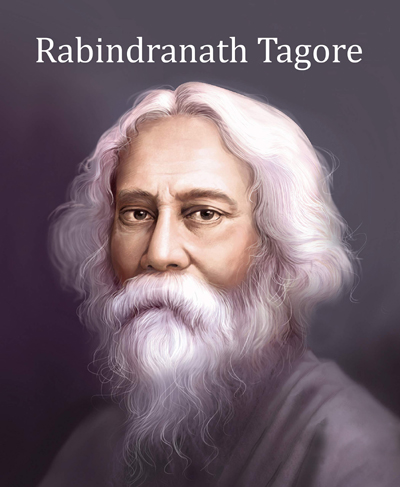Integral health
The dangers of oversimplification
Rabindranath Tagore met Sri Aurobindo briefly on 29th May, 1928 and wrote about his impressions in a short essay. He complimented Sri Aurobindo for not denying the complexity of human life and for not unnecessarily oversimplifying existential issues. The human personality consists of a bewildering diversity of elements and such a wealth of resources could not be denied for the sake of simplicity so as to fit any set pattern of life. The human spirit, intrinsically free, could not be cramped to doctrinal norms (1).
Tagore was predated by Friedrich Nietzsche who was always interested in the philosophy of the future, “O sancta simplicitas!”* In what strange simplification and falsification man lives! One can never cease wondering once one has acquired eyes for this marvel! How we have made everything around us clear and free and easy and simple! ….. science at its best seeks most to keep us in this simplified, thoroughly artificial, suitably constructed and suitably falsified world (2).” Nietzsche surmised that knowledge was sought to be constructed on the granite foundation of ignorance not by contradicting it but by refining it (3).
After more than a century, Nietzsche’s apprehensions for the sanctification of simplicity have received attention from a section of physicists. It seems that by relying on second order linear differential (SOLD) equations that bypassed non-linear terms, attempts to understand the mystery of galaxies and the interior of quarks reflect a rather oversimplified quest of a real truth while attempts to write off discrepancies by fancied concepts like ‘dark matter’ might prove to be travesty of truth (4).
In the field of psychology, it is difficult to explain behaviour in simplistic terms if there are more than one dependent variable and if the dependent variables could not be simply combined. That is why non-linear multivariate models became more important than univariate techniques. Yet they too could not be successfully employed to classify depressive illness, illustrating that reality is far more complex than our assumptions about the nature of the data processed.
Health has been an equally enigmatic field. When a model of physical health proved too simplistic, it had to be supplemented successively by the dimensions of social health, psychological health and finally by spiritual health. The definition of health was never satisfactorily established as a mere absence of illness until it was modelled on the concept of well-being enshrined in Ayurveda, where the term swasthya denoted a sense of well-being arising from being poised in the selfor the inner essence of the being. But the self is a fourth dimensionalprinciple that is too complex to be assessed by external methods.
That truth is really complex is best illustrated by the psychological perspective implicit in the epics. An ordinary novel starts usually from one point and can be traced to a climax that may or may not lead to an anti-climax before the story-telling is completed. Sometimes the story-telling is not completed leaving the reader to guess but that is a bit more realistic because in actuality, all conflicts of life are rarely resolved. The epic however is a different phenomenon. The battle of Mahabharata, one of the greatest epics, cannot be traced satisfactorily from one single point. Indeed, many heterogeneous forces from many different poises of consciousness, at many points in time coalesce in the battlefield and which go on acting even after the battle is over, in different denouements. That is why an epic, unlike a novel, survives the vicissitudes of time.
Human behaviour has a similar trajectory. Many influences acting throughout different points in a lifetime can be behind a particular behaviour and who knows might include influences beyond a lifespan. The influences beyond the life-span may be tracked to memory-traces left in the cosmic consciousness from bygone eras of individual and collective life to which the individual psyche might feel an affinity, or may be even superconscient influences from the unborn future. It is this rich and variegated complexity that is behind human behaviour and which cannot be oversimplified to conform to set standards.
Spirituality also has its perspective of complexity. In the conventional tradition of India, ascetics sought to be liberated from the ego-bound material life to be absorbed in the ineffable Supreme or the Great Void. This was extremely difficult, ascetically strenuous but metaphysically simpler. In contrast, Sri Aurobindo sought to manifest spirituality in material life per se. This was not to be a simple leap out of life to the Absolute but required a traversing of increasingly complex supra-cognitive strata (far more complex than the material life yoked to suffering, falsehood, ignorance and death) until the supreme creative consciousness (the Supramental Consciousness) could be accessed to make it available for manifestation in the earth-consciousness.
A perfection of individual life or a programme of personal growth is also a complex affair in Sri Aurobindo’s paradigm of consciousness. One has to realise and experience an inner being or subliminal personality behind the ego-bound outer being or surface personality. The inner being (subliminal personality) holds an inner mind, an inner vital and a subtle physical (5). In the outer being, the planes of consciousness – physical, vital and mental, are intermingled with each other and the ego in trying to balance them becomes skewed. The inner being is in communion with the cosmic consciousness from where great inspirations can come but also from where giant negative influences can invade the being. To handle such forces positively one has to experience the beyond-ego principle or psychic being in the soul-space supporting the inner being (as the ego cannot supportthe inner being). The psychic being gives an experience of all our intense movements of love, purity, beauty and oneness. It facilitates devotion, self-giving, surrender; discrimination and choice of Truth, Goodness, Beauty and rejection of all that is false, evil, ugly and discordant. The psychic being itself is a projection of the Jivatman which upholds the being from outside the manifestation. A contact with the Jivatman gives the experience of freedom, wideness, mastery and a sense of universality in the individual (6).
This is not all. One can go down to clean the subconscient only when one can be poised deep within oneself or above oneself. Finally, one needs to traverse the Overhead planes above the thinking mind so as to access the supra-cognitive planes of consciousness and activate supra-rational faculties like intuition for a greater guidance in life. As one progresses in this endeavour, the gap between Knowledge and Will, Consciousness and Force is gradually bridged. Such is the complexity of a programme for personal growth.
What is the end-result of the pursuit of such a complexity? If material life has to be made perfect in terms of health, psychology, action and knowledge, one cannot take a simple leap out of life to the Absolute or Void. One has to deal with intervening variables, working on them, expanding their scope, elevating them, enriching them with yet unborn terms and acknowledging the intricacy and complexity of the manifestation; there can be no macadamized shortcut. It is only then that the inner Light can illumine the material life.
“As if strophes of a cosmic ode,
A hierarchy of climbing harmonies
Peopled with voices and visages
Aspired in a crescendo of the Gods
From Matter’s abysses to the Spirit’s peaks (7).”
References
1. Tagore R. Aurobindo Ghosh, written on board Santili Ship, May 29th, 1928.
2. Nietzsche F. Beyond Good and Evil — Prelude to a Philosophy of the Future. New York: Random House Vintage books ed. Transl. by Kaufmann W; 1989, p. 35.
3. Ibid.
4. Dasgupta,B. Physics Revisited. The Statesman, February 4th, 2018; Kolkata.
5. Basu S. Integral Health. 2nd ed. Pondicherry: SAIIIHR; 2011, p.70.
6. Ibid., p. 84.
7. Sri Aurobindo. Birth Centenary Library, Volume 28. Pondicherry: Sri Aurobindo Ashram Trust; 1970, p..91.
*holy simplicity
Share with us (Comments, contributions, opinions)
When reproducing this feature, please credit NAMAH, and give the byline. Please send us cuttings.




